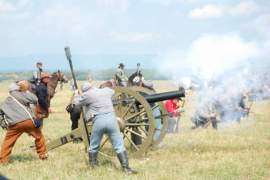
Understanding The Arguments For Gun to Murder Ratio

The core of the gun control debate revolves around 1 fundamental question: is there a correlation between the accessibility of handguns and the homicide rate? The two sides (those in favor of gun control and those who want more gun rights) commonly use gun crime statistics to support their respective arguments. Similar to any good debate, both parties will create, alter, and sift through an assortment of gun crime statistics to support their base.
Those in favor of less restrictive gun laws will use violent crime statistics that portray a declining gun to murder ratio in America. Gun crime statistics debunk many myths regarding gun ownership and their effects on crime in the United States. In fact, proponents for less regulation use such numbers to actually show that the inverse is true-more restrictions on handguns will yield a higher murder rate. Gun rights activist point to Washington D.C. as their latest example to prove such a theory.
In 1975, the District of Columbia imposed a ban on all handgun purchases and importing rights for its citizens. The groundbreaking legislation was an attempt to curb the city's sky rocketing murder rates. The result however was not expected.
Throughout the 90's DC was referred to as the murder capital of the US, and homicide rates actually spiked with the banning of all handguns. The law did not impede violent people from obtaining such weapons, in fact, those unlawful citizens grew more desperate and their desire to commit deviant acts increased. The law was lifted in 2008, and this past year Washington D.C. experienced a drop of 25% in its murder rate, with the re-installment of hand gun rights.
The city of Chicago experienced a similar cause and effect. In 1982, Chicago placed a ban on all handgun purchases and made it illegal to possess the weapon within city limits. The result-17 years after it's handgun ban went into effect, Chicago has had only 2 years of equal murder rates to 1982's level. Chicago’s murder rate fell relative to other largest 50 largest cities prior to the ban and rose relative to them afterwards.
There are 250+ million privately-owned firearms in the United States, this number increases roughly 5 million annually, yet the murder rate has trended downward every year since 1996. These numbers continued to trend down last year as well-during the first 10 months of 2009 homicides fell 10 percent while gun sales rose by nearly 5%.
Those in favor of more restrictive gun laws, will generalize similar gun crime statistics. Advocates for strict gun laws point out the obvious-guns kill people purposefully and by accident. Over 75% of murders in the United States are caused by firearms. Gun crime statistics show that the United States is susceptible to the formation of illegal gun markets, gun trafficking, and illegal gun transportation across state lines. The increased availability of guns will inevitably lead to unlawful use, and criminal possession.
Advocates for more stringent gun laws will point to states like New Jersey and New York who have made significant strides in decreasing their respective murder rates through an adoption of stringent gun laws. On a Federal level, the implementation of the Brady Bill created an immediate positive impact in regards to homicide rates. Gun crime statistics have revealed that murders dipped by 25% in it's first 4 years, and 46% overall.
It's difficult to fully gauge and interpret these statistics due to their complexity and adaptivity. Gun crime statistics are highly elastic, they are sensitive to change based on cultural influences, economic times, or other abstract circumstances. Restricting gun laws will decrease the murder rate in certain areas, while increasing it in others. It's a sensitive issue, and one that will continue to perplex experts for years to come.
NEXT: What You Need to Know About Gun Statistics Background




















